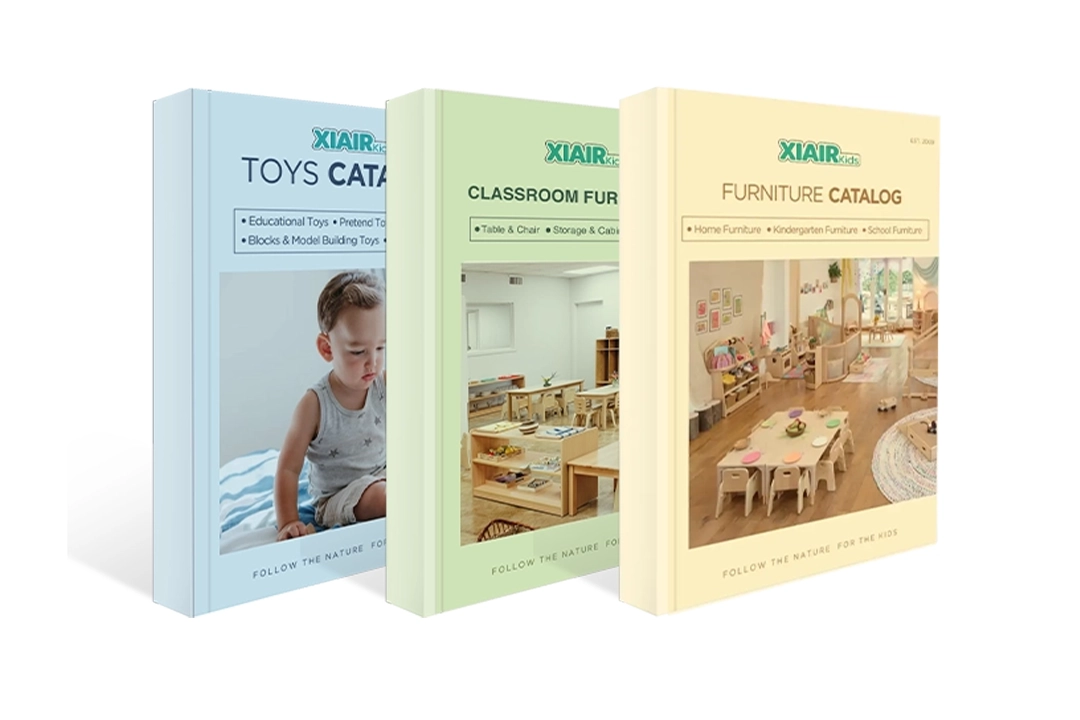Why does your child seem to understand everything you say but struggle to express themselves? Or perhaps they talk a lot, yet have difficulty following simple instructions. These are typical concerns for many parents and educators. At the heart of these communication challenges lie two foundational concepts: receptive and expressive language. But what exactly do these terms mean, and how do they affect a child’s overall development?
Receptive and expressive language are the two main components of communication. Receptive language refers to the ability to understand spoken or written language, such as following directions or grasping the meaning of a story. Expressive language, on the other hand, involves using words, gestures, or writing to communicate thoughts, needs, and feelings. Understanding how these skills develop helps identify potential delays early and provides a roadmap for supporting language growth at home and in the classroom.
In this article, we’ll break down the differences between receptive and expressive language, share real-life examples, and highlight typical developmental milestones from early childhood onward. Keep reading to gain clarity, guidance, and confidence in nurturing your child’s communication journey.
What Is Receptive Language?
Receptive language is the ability to understand and process the language we hear, read, or see. It forms the foundation of communication and is typically developed before expressive language. Children must first understand what words mean and how they’re used before they can begin using those words themselves.
In early childhood, receptive language includes skills such as following simple directions, recognizing names, understanding questions, and responding to familiar phrases. These skills are crucial not only for communication but also for learning, social interaction, and classroom participation. Children with strong receptive language skills can interpret meaning from context, understand instructions, and make sense of the world around them.
A delay in receptive language can make it difficult for children to follow directions, engage in conversations, or respond appropriately in group settings. Understanding the signs of receptive language development—and what’s typical for each age—is key to identifying potential concerns early.
Characteristics of Receptive Language Development
Receptive language development is not a sudden leap but a gradual and layered process. As children grow, they acquire increasingly complex skills that reflect their understanding of the spoken and written world around them. Here are the key characteristics of receptive language development:
- Early Emergence Before Expressive Skills
Receptive language begins to develop from infancy, often months before children start to speak. Babies first show understanding through actions like turning toward sounds or responding to their name. This early development sets the stage for later expressive language use. - Progression from Simple to Complex Understanding
Children initially understand basic words, gestures, and simple one-step commands. Over time, they learn to interpret multi-step instructions, answer questions, understand descriptive language, and eventually grasp abstract concepts like time, emotion, and cause-and-effect. - Dependence on Context and Routine
In early stages, children rely heavily on familiar routines and environmental cues to understand language. They may understand “time to eat” when it’s paired with a specific gesture or setting, even if they don’t fully comprehend each word individually. - Growth Through Repetition and Exposure
Consistent exposure to spoken language helps strengthen receptive skills. Repeated reading, songs, and daily conversations help children learn new vocabulary and sentence structures passively over time. - Interconnected with Listening and Attention Skills
Receptive language is closely tied to a child’s ability to listen and focus. A child must attend to what is being said to process and understand it. Attention difficulties can sometimes mask or mimic receptive language delays. - Influences on Expressive Language and Overall Communication
Receptive and expressive language are deeply connected. A child who struggles to understand language will likely also have difficulty using language. As receptive skills strengthen, children gain the building blocks needed for expressing thoughts, feelings, and ideas. - Culturally and Environmentally Influenced
The rate and quality of receptive language development are influenced by the child’s environment, including how often adults talk to them, the richness of language used, and access to books, music, and social interaction.
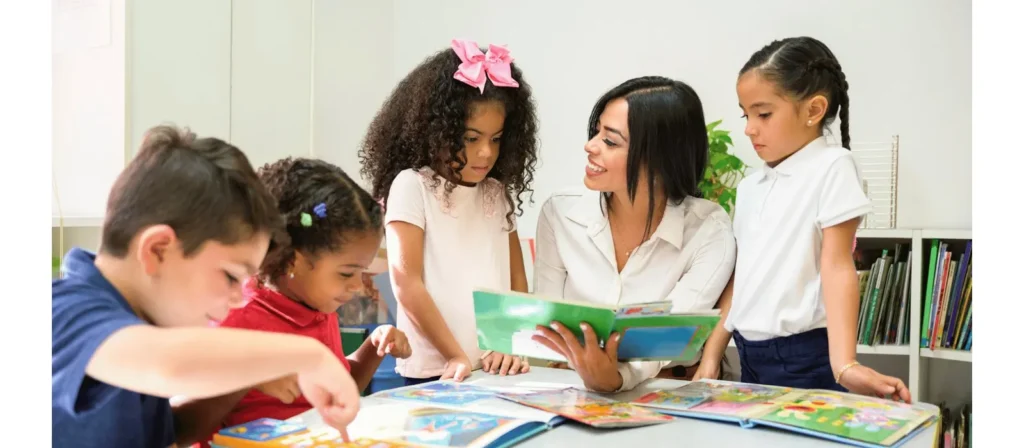
Receptive Language Examples
Understanding what receptive language looks like in everyday life can help parents, educators, and caregivers recognize it in action. Here are some real-world examples:
- A toddler who looks at the correct object when asked, “Where is the ball?”
- A preschooler who begins to clean up their toys when told, “Please put your toys away.”
- A child who answers appropriately to questions like, “What’s your name?” or “Do you want juice or water?”
- A student who listens to a story and then correctly retells what happened or answers comprehension questions.
- An adult who listens to instructions during a meeting and then follows through on the assigned task.
Each of these examples demonstrates the brain’s ability to decode and make sense of incoming language, which is the core of receptive language.
Why Is Receptive Language Important?
Strong receptive language skills provide a wide range of developmental, academic, and social benefits for children. These skills are the foundation for effective communication and learning, influencing how children understand and interact with the world around them. Below are the key benefits of well-developed receptive language:
- Improved Communication
Children with strong receptive language can understand spoken instructions, questions, and stories more easily. This allows them to engage in conversations, follow directions, and respond appropriately in both social and educational settings. - Foundation for Expressive Language
Receptive language supports the development of expressive language. A child must first understand vocabulary and sentence structures before they can use them to express themselves clearly and confidently. - Support Learning and Academic Success
Understanding what is taught in class is essential for academic progress. Receptive language helps children comprehend lessons, read with understanding, and follow multi-step instructions—skills that are crucial across all subjects. - Stronger Social Skills and Relationships
Receptive language enables children to interpret verbal and nonverbal cues, understand social rules, and participate meaningfully in group activities. This supports positive peer relationships and cooperative play. - Better Emotional Regulation
When children understand what is being said to them, they experience less confusion and frustration. This helps reduce behavioral issues and supports emotional development, especially in stressful or unfamiliar situations. - Greater Independence and Confidence
Children with well-developed receptive language are better able to navigate everyday situations independently, whether it’s following routines, completing tasks, or understanding safety instructions. This builds self-esteem and confidence.
Key Receptive Language Skills
Receptive language is composed of several interrelated skills that enable individuals to understand spoken and written language effectively. Each skill contributes to overall comprehension, and when developed together, they support a person’s ability to interpret, process, and respond to information. Here are the most critical receptive language skills:

- Listening and Attention
One of the earliest and most foundational skills, listening and sustained attention, allows individuals to focus on verbal input long enough to interpret its meaning. This includes tuning in to a speaker, filtering out background noise, and remaining mentally engaged. - Understanding Vocabulary
A strong mental lexicon (internal word bank) is key to comprehension. This skill involves not only recognizing words but also understanding their meanings, synonyms, antonyms, and how they are used in different contexts. - Following Directions
The ability to follow verbal instructions—whether one-step (“Sit down”) or multi-step (“Put your book on the shelf and then go wash your hands”)—is a major indicator of receptive language development. This skill requires auditory processing, memory, and understanding of sequencing. - Comprehension of Questions
Responding correctly to questions such as “What,” “Where,” “Why,” or “How” reflects a person’s ability to decode the intent behind language. It also shows the capacity to interpret the complexity of sentence structures and extract relevant information. - Understanding Grammar and Syntax
Recognizing sentence structure, verb tense, plurals, and other grammatical elements helps individuals derive accurate meaning from what they hear or read. Even subtle grammatical cues can drastically change a sentence’s message. - Interpreting Nonliteral Language
As language skills mature, the ability to understand idioms, metaphors, jokes, and sarcasm becomes essential. This more advanced skill also includes grasping context and reading between the lines. - Auditory Memory and Sequencing
This skill allows individuals to retain and recall information presented verbally. It is vital for remembering instructions, story details, and multi-part conversations. - Categorization and Association
Understanding how words and concepts relate, such as recognizing that a dog is an animal or that socks and shoes go together, supports more sophisticated language processing and conceptual learning.
How to Support Receptive Language?
Supporting receptive language doesn’t require specialized tools—it begins with intentional communication, patience, and consistent interaction. Whether you’re a parent, teacher, or caregiver, many practical strategies can strengthen a child’s ability to understand and process language.
Use Clear and Simple Language
Children with receptive language challenges often benefit from clear, concise speech. Avoid using long or complex sentences, especially when giving instructions. Instead, break information down into manageable chunks. For example, instead of saying, “Before we leave, go get your shoes, pack your bag, and bring your water bottle,” try, “Get your shoes. Then pack your bag.” Pausing between steps and checking for understanding can help reinforce comprehension.
Repeat and Rephrase Instructions
Repetition reinforces memory and comprehension. If a child doesn’t seem to understand something the first time, calmly repeat it using slightly different words. Rephrasing helps them hear the same message in new ways, which may increase the chances of understanding. For example, if a child doesn’t respond to “Please tidy up,” try “Can you put your toys back in the box?”
Encourage Eye Contact and Active Listening
When speaking to a child, gently prompt them to make eye contact and pay attention by saying their name before giving instructions. This helps them focus and signals that important information is coming. You can also model active listening by nodding, maintaining eye contact, and summarizing what they say—this shows them how to listen and respond thoughtfully.
Pair Words with Visuals or Gestures
Many children process visual information more easily than verbal language alone. Using pictures, symbols, or simple gestures along with spoken words can significantly improve understanding. For instance, when saying “Sit down,” point to the chair. Visual schedules, flashcards, or illustrated books can also provide useful support during routines or transitions.
Ask Simple Yes/No and Choice-Based Questions
Open-ended questions can overwhelm children with receptive language difficulties. Instead, offer yes/no questions or give them clear choices. Ask, “Do you want the red cup or the blue cup?” instead of “What do you want to drink?” These types of questions help build confidence and language processing skills gradually.
Read Together Regularly
Reading books aloud exposes children to new vocabulary and sentence structures in a meaningful, low-pressure context. Choose books with repetitive language, simple storylines, and engaging illustrations. Pause frequently to ask questions like “What’s happening here?” or “Can you find the dog?”—this keeps them involved and practicing comprehension.
Use Routines to Reinforce Language
Daily routines provide the perfect setting for reinforcing language naturally. Repeating the same phrases during common activities (e.g., “Time to brush your teeth,” “Let’s wash your hands”) helps children associate language with actions and context. Over time, this predictability strengthens both receptive and expressive understanding.
Provide Extra Time to Process
Children with receptive language delays may need a few extra seconds to process what they’ve heard before responding. Give them that pause. Avoid rushing to repeat or answer for them too quickly. This gentle wait time encourages independence and helps build internal language processing skills.
Model Language Through Play
Play is one of the most effective ways to teach and model language. Join in your child’s play and narrate actions as they occur—“You’re feeding the teddy,” or “Let’s drive the car to the garage.” This helps children link words with actions and increases contextual understanding.
Challenges Associated with Receptive Language Delay
When receptive language development is delayed, it can impact a child’s cognitive, social, and emotional well-being in numerous ways. Since understanding comes before expression, delays in receptive language often create a ripple effect that interferes with overall communication and development. Below are some of the most common challenges associated with receptive language delays:

- Misdiagnosis or Mislabeling
Children with receptive language delays are sometimes misdiagnosed with attention disorders or behavioral issues when the core problem lies in language comprehension. This can delay access to appropriate support and interventions. - Difficulty Following Instructions
Children with receptive language delays may struggle to follow simple or multi-step directions. This can lead to misunderstandings at home or in school, and may mistakenly be seen as inattentiveness or defiance. - Poor Academic Performance
Comprehension is the foundation of learning. Children with delayed receptive language skills often find it hard to grasp new concepts, participate in discussions, or understand classroom routines, leading to learning gaps over time. - Limited Vocabulary Development
A delay in understanding words affects the ability to learn and use new vocabulary. This can result in limited expressive language skills, where the child may use fewer words or repeat familiar phrases without truly grasping their meaning. - Social Difficulties
Misunderstanding what peers or adults are saying can cause frustration, isolation, or inappropriate responses in social settings. Children might miss out on play opportunities or struggle with turn-taking, sharing, or responding to questions appropriately. - Emotional and Behavioral Issues
When children can’t understand expectations or verbal cues, they may become anxious, frustrated, or withdrawn. This can sometimes manifest as tantrums, aggression, or avoidance behavior, not due to bad behavior, but from a place of confusion or overwhelm. - Delayed Expressive Language
Since expressive language builds on what a child understands, delayed receptive skills often lead to late talking, limited sentence formation, or difficulty with storytelling and conversation skills. - Reduced Confidence and Self-Esteem
Constant misunderstandings and communication breakdowns can take a toll on a child’s confidence. They may begin to feel “different” or incapable, especially if they notice peers communicating more easily.
La tua classe perfetta è a un clic di distanza!
What Is Expressive Language?
Expressive language refers to the ability to communicate thoughts, feelings, ideas, and information through verbal and non-verbal methods. This includes speaking, writing, using gestures, and even facial expressions. It’s a crucial aspect of overall language development and plays a fundamental role in effective communication.
While expressive language focuses on output, it works in tandem with receptive language, which involves understanding and processing the language one hears or reads. Children and adults rely on expressive language to form meaningful interactions, express needs, and build social relationships.

Characteristics of Expressive Language Development
Expressive language development refers to a child’s ability to use words, gestures, signs, or written symbols to communicate thoughts, needs, and emotions. It builds upon receptive language and continues to evolve throughout early childhood. Below are the key characteristics of expressive language development:
- Follows Receptive Language Growth
Expressive language emerges after receptive language. Children must first understand words and sentence structures before they can begin using them to speak or write effectively. - Begins with Nonverbal Communication
Early expressive communication includes crying, cooing, babbling, and gesturing. These nonverbal forms gradually evolve into verbal expression as children gain control over sounds and learn word meanings. - Vocabulary Expands Rapidly with Age
Between the ages of 18 months and 3 years, children often experience a vocabulary “explosion.” They move from saying single words to combining them into short phrases and eventually forming complete sentences. - Grammar and Sentence Structure Develop Over Time
Expressive language becomes more sophisticated as children begin to use correct tenses, plurals, pronouns, and more complex sentence forms. They also learn how to ask questions, make requests, and describe events. - Relies on Cognitive and Social Skills
Expressive language requires mental organization, memory, and social understanding. Children must know what they want to say, how to structure it, and when it’s appropriate to say it in a social context. - Strongly Influenced by Environment and Interaction
Children learn to express themselves through conversation, storytelling, and social interaction. Rich language environments that encourage dialogue and exploration promote faster and more confident expressive development. - Closely Linked with Receptive Language
Receptive and expressive language develop together. Children who struggle to understand language may also face difficulties in expressing themselves. Monitoring both areas is key to identifying language delays or disorders.
Expressive Language Examples
Expressive language can be showcased in various forms. Here are some common examples:
- Spoken Words: “I’m hungry,” “Look at the dog,” or “I want to play.” These verbal expressions convey needs, observations, or desires.
- Written Communication: Writing a sentence like “Today I went to the park” illustrates expressive language through text.
- Non-verbal Gestures: Pointing, shaking the head, or nodding to indicate responses or emotions.
- Art and Drawings: Using visual forms to communicate thoughts or stories.
- Augmentative and Alternative Communication (AAC): Tools like picture boards or speech-generating devices are used by individuals with speech difficulties.

Why Is Expressive Language Important?
Expressive language is central to how we communicate thoughts, emotions, and intentions. It enables individuals to interact effectively with others, share their knowledge, and assert their needs. When expressive language skills are strong, people can confidently participate in everyday communication. Here are several reasons why expressive language is so important:
- Facilitates Social Interaction and Relationship Building
Expressive language allows individuals to initiate conversations, respond appropriately, and engage in meaningful dialogue. Whether a child says “Can I play?” or a friend shares a story, expressive language is key to developing and maintaining social relationships. - Supports Emotional Expression and Regulation
Being able to say “I’m angry,” “I’m sad,” or “That hurt my feelings” is critical for emotional well-being. Expressive language helps children and adults alike process emotions and seek help or comfort, reducing frustration and behavioral outbursts. - Essential for Academic Success
In educational settings, students are often asked to explain their thinking, describe events, write essays, or give oral presentations. Strong expressive language enables learners to demonstrate understanding, participate in discussions, and engage fully in the learning process. - Promotes Independence and Advocacy
Expressive language empowers individuals to ask for help, express preferences, or negotiate choices—skills that are crucial for self-advocacy and independence, especially in school, healthcare, and daily life scenarios. - Enhances Sviluppo cognitivo
Organizing and verbalizing thoughts helps strengthen thinking and reasoning skills. Activities like storytelling, explaining ideas, or debating a topic encourage higher-order thinking and logical structuring of information. - Supports Expressive Writing and Literacy
Expressive language isn’t limited to speech. It lays the groundwork for writing skills, including sentence formation, vocabulary usage, and coherent organization of ideas. These skills are essential for preschool literacy and academic tasks. - Improves Problem-Solving and Negotiation Skills
Whether it’s resolving a conflict with a peer or figuring out how to complete a task, expressive language enables clear communication and cooperative problem-solving. - Builds Confidence and Identity
Being able to express oneself clearly fosters self-esteem. It allows individuals to share who they are, what they know, and how they feel, strengthening their voice in both personal and public spheres.
Key Expressive Language Skills
Expressive language relies on a range of cognitive and linguistic abilities that work together to form coherent, effective communication. Each of these skills plays a vital role in helping individuals share thoughts, emotions, and information. Below are the most important expressive language skills, all of which contribute to successful verbal or written expression:
- Vocabulary Use
A rich and functional vocabulary allows individuals to name objects, describe experiences, and convey ideas accurately. The wider the vocabulary, the more precisely someone can communicate. - Sentence Structure and Grammar
Forming grammatically correct and structurally sound sentences is essential. This includes using subject-verb agreement, proper tense, articles, pronouns, conjunctions, and word order. - Word Retrieval and Naming
This skill involves accessing the correct words quickly and efficiently. Children and adults with expressive language delays may “know” the word but struggle to recall it during conversation, often using fillers like “um” or replacing words with generic ones like “thing.” - Narrative Skills and Storytelling
The ability to tell a story or describe events in a logical sequence with a beginning, middle, and end is a more complex expressive skill. It also involves using descriptive language and maintaining the listener’s attention. - Asking and Answering Questions
Expressive language includes forming both simple and complex questions and responding appropriately to others’ inquiries. This back-and-forth is foundational for conversation and learning. - Expressing Feelings and Opinions
Articulating emotions like “I’m nervous” or “That made me happy” is a key component of self-awareness and social interaction. It also includes stating preferences, dislikes, or personal viewpoints. - Using Language for Different Functions
Effective communicators use language in various ways: to request (“Can I have a turn?”), to inform (“It’s raining outside”), to greet (“Hello!”), to reject (“No, thank you”), and more. These functional uses of language are learned over time and refined through experience. - Clarity and Fluency
Speaking smoothly, without excessive hesitation or repetition, helps ensure the message is understood. Clarity also includes correct articulation and volume control. - Using Cohesive Devices
Words like “and,” “then,” “because,” or “so” link thoughts together and make speech or writing more organized and easier to follow. These tools help maintain logical flow and coherence. - Nonverbal Expression
Facial expressions, gestures, and body language all enhance verbal expression. Nodding, smiling, or using hand motions while speaking makes communication more engaging and effective.
How to Support Expressive Language
Building expressive language skills takes time, patience, and intentional interaction. Whether you’re a parent, teacher, or therapist, there are many ways to encourage a child or individual to express themselves more clearly and confidently. Below are some effective, evidence-based strategies for supporting expressive language development.

Model Rich and Varied Language
One of the most powerful tools is simply modeling good language. Speak in full sentences, use descriptive words, and narrate everyday actions. For example, instead of saying “Ball,” you can say, “You have a big, red ball! You’re bouncing it high!” This exposes the child to new vocabulary, sentence structures, and expressive possibilities in context.
Encourage Verbal Expression in Daily Routines
Turn everyday moments into language opportunities. Ask open-ended questions during meals, playtime, or walks—like “What do you see?” or “What should we do next?”—to invite the child to express thoughts and observations rather than answer with yes/no.
Use Visual Supports and Prompts
Pictures, storyboards, and visual cues can help children organize their thoughts before speaking. For example, a “first-then” board or a picture sequence can help them describe events, plan their sentences, or retell a story. These supports are beneficial for children who struggle to retrieve or organize words.
Expand and Recast Their Sentences
When a child says something simple like “Dog bark,” expand their utterance: “Yes, the dog is barking loudly!” Recasting reinforces correct grammar and structure while validating the original message. This technique helps build confidence and introduces more complex sentence models.
Give Choices and Encourage Decision-Making
Instead of asking “What do you want?” which can be overwhelming, offer two choices: “Do you want the red crayon or the blue crayon?” This approach encourages the child to use specific words and make decisions, key components of expressive development.
Use Play-Based Language Activities
Imaginative play is a natural way to encourage expression. Role-playing with dolls, puppets, or action figures gives children a chance to invent dialogue, describe scenarios, and explore vocabulary in a relaxed setting. Narrate their play and ask questions like, “What should the bear do now?”
Pause and Provide Processing Time
Give children space to think and speak without rushing to fill the silence. Waiting patiently shows that you value their input and allows them time to organize their thoughts. Avoid interrupting or finishing their sentences, even if they’re struggling.
Incorporate Songs, Rhymes, and Repetition
Music and rhythm help reinforce language patterns and make learning fun. Singing familiar songs, practicing rhymes, and repeating phrases or lines from stories support memory and fluency in expression.
Encourage Storytelling and Retelling
Ask children to retell stories from books, their day, or their imagination. Use prompts like “What happened first?” or “Then what did he do?” to guide their sequencing and vocabulary use. This builds narrative structure and expressive confidence.
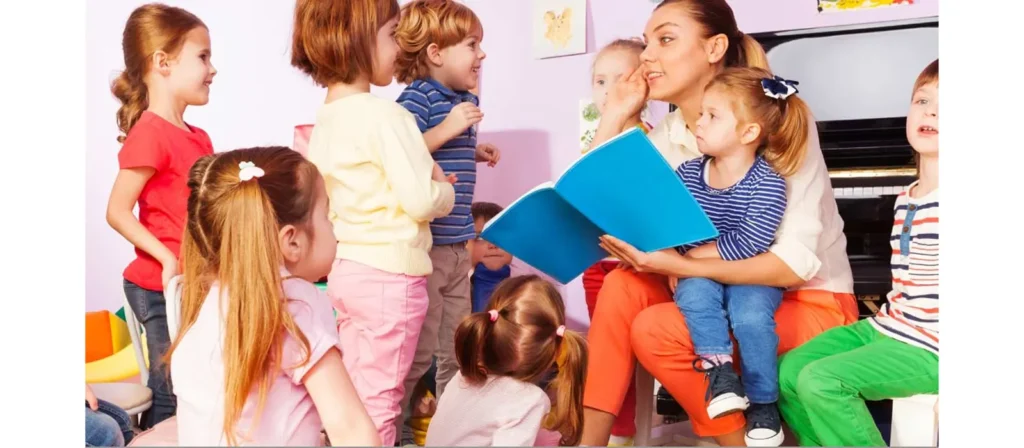
Celebrate All Efforts to Communicate
Praise attempts at speaking, even if the sentence isn’t perfect. Positive reinforcement boosts confidence and encourages continued effort. Say things like, “I love how you told me about your drawing,” or “You explained that so clearly!”
Challenges Associated with Expressive Language Delay
When expressive language development is delayed, it can affect a person’s ability to communicate clearly, leading to a wide range of difficulties across social, emotional, and academic areas. While each individual may experience these challenges differently, the following are commonly observed issues associated with expressive language delay:
- Struggling to Make and Maintain Friendships
Difficulty expressing thoughts and feelings can hinder social interaction. Children may find it hard to start conversations, join group play, or respond to peers, leading to social isolation or misunderstandings with friends. - Misinterpretation by Others
When a child cannot clearly articulate what they want or need, adults or peers may misinterpret their intentions or emotions. This can lead to frustration, conflict, or being unfairly labeled as defiant, shy, or inattentive. - Frustration and Emotional Outbursts
Not being able to communicate effectively often leads to frustration. Children may become easily upset when they cannot express what they feel, want, or need, sometimes resulting in tantrums, withdrawal, or avoidance of speaking situations. - Limited Participation in Group Activities
In classrooms or social settings, children with expressive language challenges may hesitate to participate in discussions, answer questions, or share their ideas, which can limit their engagement and confidence. - Difficulty Advocating for Themselves
A child may struggle to express discomfort, ask for help, or clarify misunderstandings. This affects their ability to get their needs met, resolve conflicts, or stand up for themselves in various situations. - Challenges with Academic Output
While a child may understand lessons (strong receptive skills), their difficulty expressing knowledge can make it hard to complete oral presentations, write essays, or answer open-ended questions, affecting grades and teacher perceptions. - Reduced Independence in Daily Routines
Inability to express preferences or ask questions can make children overly reliant on adults to interpret or make decisions for them. This affects their independence and ability to navigate everyday situations like ordering food, asking for directions, or managing schedules. - Emotional Withdrawal or Avoidance
Persistent challenges in communication can lead some children to stop trying. They may avoid speaking situations altogether, pretend not to know answers, or develop anxiety around language-related tasks. - Barriers to Inclusion
Expressive language delays can make it difficult for children to participate in inclusive classrooms or community settings without additional support. This may result in being left out of collaborative activities, storytelling, or classroom roles.
Differences Between Receptive and Expressive Language
Receptive and expressive language are two essential, interdependent components of communication, but they serve very different functions. Understanding the distinction between them is key for identifying language strengths, addressing delays, and providing targeted support. Here’s a breakdown of the main differences between receptive and expressive language:
| Aspetto | Receptive Language | Expressive Language |
|---|---|---|
| Definition | The ability to understand and process language input | The ability to express thoughts, feelings, and ideas through language |
| Primary Function | Receiving and interpreting spoken, written, or signed language | Producing and delivering language through speech, writing, or gestures |
| Examples | Following instructions, understanding questions, recognizing vocabulary | Asking questions, telling stories, labeling objects, expressing needs |
| Developmental Sequence | Typically develops earlier; infants often understand before they speak | Usually follows receptive development; toddlers begin expressing what they understand |
| Skills Involved | Listening, attention, vocabulary comprehension, grammar understanding | Vocabulary usage, sentence formation, grammar production, word retrieval |
| Learning Impact | Affects comprehension, instruction processing, and reading readiness | Affects writing, classroom participation, and verbal output |
| Social Implications | May appear inattentive or unresponsive in conversation | May be quiet, withdrawn, or struggle to contribute in conversations |
Primary Function: Receptive vs Expressive Language
- Receptive Language
The main function of receptive language is to receive and comprehend information. It involves listening to what others say, reading written text, interpreting signs, or understanding nonverbal cues. This is the intake side of communication—understanding what’s being communicated. - Expressive Language
Expressive language, on the other hand, is all about output. It enables an individual to use words, phrases, gestures, or writing to share thoughts, express needs, describe events, or engage in conversation. It’s how we turn internal thoughts into external messages others can understand.
Developmental Order: Receptive vs Expressive Language
- Receptive Language
Receptive language typically develops earlier. Even before a baby speaks, they respond to sounds, recognize their name, and begin to understand familiar words and routines. This early comprehension is foundational for later communication skills. - Expressive Language
Expressive language usually emerges after receptive understanding is in place. Babies first express themselves through crying and gestures, then progress to babbling, first words, and eventually form sentences as they learn how to articulate what they know and feel.
Key Skills Involved: Receptive vs Expressive Language
- Receptive Language
This includes auditory processing, attention, vocabulary comprehension, and the ability to interpret grammar and sentence structures. It also involves understanding tone, context, and nonliteral language such as metaphors or idioms. - Expressive Language
This skill set includes word retrieval, grammar usage, sentence formation, clarity, fluency, and storytelling ability. Expressive language also relies on organizing thoughts, sequencing events, and using language appropriately in social settings.
Everyday Examples: Receptive vs Expressive Language
- Receptive Language
A child demonstrates receptive language when they respond to their name, follow a direction like “Please get your shoes,” or point to a dog when asked, “Where’s the dog?” - Expressive Language
A child shows expressive language by saying, “I want juice,” describing a drawing, or retelling a story they heard at school. Expressive language is outward communication, whether verbal or nonverbal.
Challenges When Delayed: Receptive vs Expressive Language
- Receptive Language
Delays in receptive language can lead to problems following instructions, understanding questions, or processing lessons. Children may appear inattentive or defiant simply because they don’t fully understand what is being said. - Expressive Language
When expressive language is delayed, individuals may know what they want to say but can’t express it clearly. This can cause frustration, withdrawal, or reliance on gestures or nonverbal cues to communicate.
Learning and Academic Impact: Receptive vs Expressive Language
- Receptive Language
Strong receptive language is essential for understanding classroom instructions, grasping new vocabulary, and comprehending reading material. Delays here can make it hard to learn from verbal or written instruction. - Expressive Language
This impacts a student’s ability to answer questions, participate in class discussions, complete writing assignments, and communicate ideas clearly in oral or written form.
Role in Social Communication: Receptive vs Expressive Language
- Receptive Language
Children use receptive skills to understand social cues, follow conversations, and interpret emotions in others. Deficits here can make it hard to read the room or know how to respond appropriately. - Expressive Language
This allows individuals to share their feelings, join conversations, and make friends. Without expressive language, it’s difficult to initiate interactions, share experiences, or build relationships.
Support Strategies: Receptive vs Expressive Language
- Receptive Language
Support involves simplifying language, using visuals, repeating instructions, and confirming understanding. Interactive reading and guided listening activities can also enhance comprehension. - Expressive Language
To support expressive development, adults can model rich language, expand on what the child says, encourage storytelling, and provide structured opportunities for verbal and written expression.
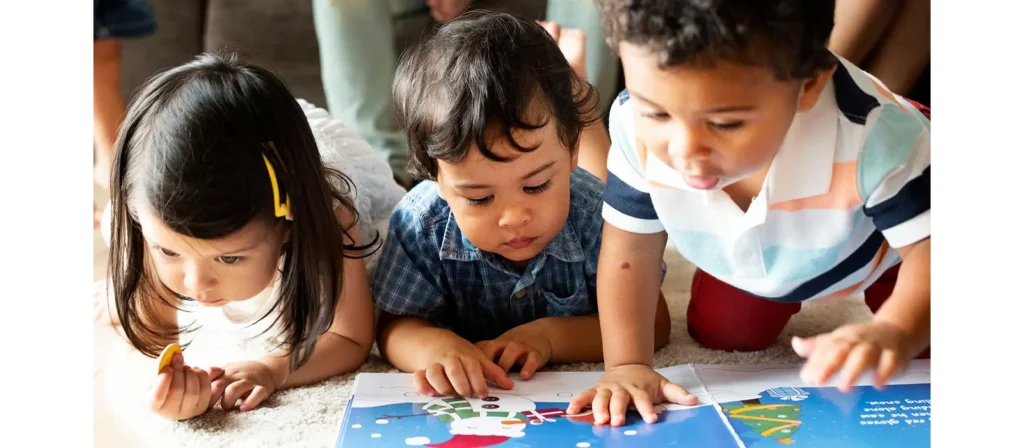
Speech and Language Milestones
Speech and language development occurs in stages, with each age range reflecting specific milestones in both receptive (understanding) and expressive (speaking) language. While each child develops at their own pace, these general benchmarks provide a guide to what’s typical and when to seek support if delays are observed.
Receptive and Expressive Language Milestones: Birth to 6 Months
Receptive Language
- Responds to sounds and voices by turning the head or quieting
- Recognizes familiar voices, especially caregivers
- Shows awareness of changes in tone or pitch
Expressive Language
- Coos and gurgles in response to interaction
- Begins to make vowel sounds like “ah,” “oo,” and “ee”
- Smiles socially and uses facial expressions to engage others
Receptive and Expressive Language Milestones: 6 to 12 Months
Receptive Language
- Responds to name and familiar words (e.g., “no,” “bye-bye”)
- Understands simple requests like “come here”
- Looks at objects or people when named
Expressive Language
- Babbles with consonant-vowel combinations like “ba-ba” or “da-da”
- Uses gestures like waving, pointing, or reaching
- May say first word (e.g., “mama,” “dada”) by 12 months
Receptive and Expressive Language Milestones: 12 to 18 Months
Receptive Language
- Understands up to 50 words and simple commands
- Responds appropriately to questions like “Where’s your ball?”
- Follows one-step directions with gestures (e.g., “Give me the toy”)
Expressive Language
- Uses 5–20 words meaningfully
- Name familiar objects and people
- Begins combining words with gestures (e.g., points and says “up”)
Receptive and Expressive Language Milestones: 18 to 24 Months
Receptive Language
- Understands simple questions (“Where is daddy?”)
- Follows more complex directions without gestures
- Recognizes names of body parts, animals, and everyday items
Expressive Language
- Vocabulary expands to 50+ words
- Begins combining two words (e.g., “more juice,” “go car”)
- Imitates words and sounds more accurately
Receptive and Expressive Language Milestones: 2 to 3 Years
Receptive Language
- Understands simple stories and conversations
- Follows two-step instructions (e.g., “Get your shoes and come here”)
- Answers simple “what” and “where” questions
Expressive Language
- Uses 2- to 4-word phrases regularly
- Vocabulary rapidly grows to 200+ words
- Begins to use pronouns (“me,” “you”) and plurals
Receptive and Expressive Language Milestones: 3 to 4 Years
Receptive Language
- Understands who, what, where, and why questions
- Follows multi-step instructions
- Comprehends longer sentences and concepts like size and color
Expressive Language
- Speaks in full sentences (4–5 words or more)
- Begins telling short stories or events
- Uses more complex grammar, including past tense
Receptive and Expressive Language Milestones: 4 to 5 Years
Receptive Language
- Understands most of what’s said at home and in preschool
- Can answer questions about stories or events
- Begins to grasp time concepts (e.g., yesterday, tomorrow)
Expressive Language
- Speaks clearly enough for unfamiliar listeners to understand
- Tells stories with a beginning, middle, and end
- Uses detailed vocabulary and more advanced sentence structures
Receptive and Expressive Language Milestones: 5 to 6 Years
Receptive Language
- Understands classroom instructions and conversation flow
- Can follow 3-step directions
- Understands humor, comparisons, and basic figurative language
Expressive Language
- Uses descriptive language and sequences events logically
- Can express opinions and ask more abstract questions
- Begins writing simple sentences and stories

Signs Your Child May Need Speech and Language Support
Early identification of receptive and expressive language difficulties is key to providing timely intervention. While children develop communication skills at different rates, certain signs may indicate a child is struggling with receptive and expressive language. Being aware of these signs helps parents and educators determine whether a child may benefit from professional support.
Receptive Language Warning Signs
- Doesn’t respond to their name by 12 months
- Has difficulty following simple directions
- Seems confused by everyday questions or statements
- Frequently asks for repetition or appears to “tune out”
- Struggles to understand stories, conversations, or classroom instructions
- Seems lost in group settings or when routines change
Expressive Language Warning Signs
- Has a limited vocabulary compared to peers
- Uses very few words or only gestures after age 2
- Struggles to form sentences or mix up word order frequently
- Cannot clearly explain thoughts or retell events
- Becomes frustrated when trying to express needs or ideas
- Speech is difficult to understand even by family members past age 3
General Communication Red Flags
- Regression in language skills after previously meeting milestones
- Lack of interest in communicating with others
- Delayed babbling, pointing, or other pre-verbal communication
- Difficulty initiating or maintaining conversations with peers
If several of these signs are present and persistent, it may be time to consult a speech-language pathologist. Early support can make a significant difference in helping children strengthen their receptive and expressive language skills, leading to more confident communication, better learning outcomes, and healthier social relationships.
Strategies to Develop Receptive and Expressive Language Skills
Supporting the development of both receptive and expressive language is critical in helping children become effective communicators. Below are several strategies that can enhance both language domains simultaneously:
Engage in Conversations Daily
Talking with children regularly is one of the simplest yet most powerful ways to develop their receptive and expressive language skills. These conversations help children absorb vocabulary, learn sentence structure, and process the flow of natural language. By asking open-ended questions and actively listening to their responses, adults create opportunities for children to express their ideas clearly while also improving their understanding of what others say. This two-way interaction is fundamental for the development of both receptive and expressive language.
Read Aloud Together
Reading aloud is a vital activity for expanding both receptive and expressive language. As children listen to the story, they develop their receptive language, learning new words and phrases. Engaging children by asking them questions about the story or encouraging them to predict what will happen next further enhances their expressive language. Retelling stories also offers children the chance to express themselves while reinforcing the new vocabulary and sentence structures they have learned.
Use Visual Aids and Gestures
Visual aids, such as flashcards, pictures, or gestures, play a crucial role in supporting both receptive and expressive language development. For receptive language, these tools help children connect words to their meanings, aiding in comprehension. For expressive language, children are encouraged to describe what they see using words or gestures. This combination strengthens their ability to understand and use language in various contexts.
Model Clear Speech and Vocabulary
When adults use clear speech and introduce new vocabulary, they help children strengthen both their receptive and expressive language. Clear speech models proper sentence structures and pronunciation, which children internalize. By expanding vocabulary through descriptive language, children learn how to express their ideas more precisely, helping them develop a broader expressive language repertoire.
La tua classe perfetta è a un clic di distanza!
Incorporate Play-Based Learning
Play is a natural environment for children to develop both receptive and expressive language skills. During pretend play or role-playing, children are exposed to vocabulary related to various scenarios, which enhances their receptive language. At the same time, they practice expressive language by engaging in dialogues, narrating actions, or creating stories. Play-based learning offers a relaxed yet powerful way to integrate both types of language development.
Activities to Support Receptive and Expressive Language Development
Supporting both receptive and expressive language skills can be done through playful, engaging, and interactive activities that help children learn while having fun. Below are 10 activities that can boost language development for children of various ages:

Simon Says: This classic game helps develop receptive language skills by encouraging children to follow verbal instructions. Use simple commands like “Simon says, touch your nose” or more complex ones like “Simon says, jump three times and then clap your hands.” You can also encourage expressive language by asking children to give their instructions for others to follow.
Storytelling with Pictures: Provide your child with picture cards or use a picture book with no text. Ask them to create a story based on the pictures. This helps develop expressive language by encouraging the child to construct sentences, sequence events, and use new vocabulary. It also supports receptive language as they listen and understand the stories in the pictures.
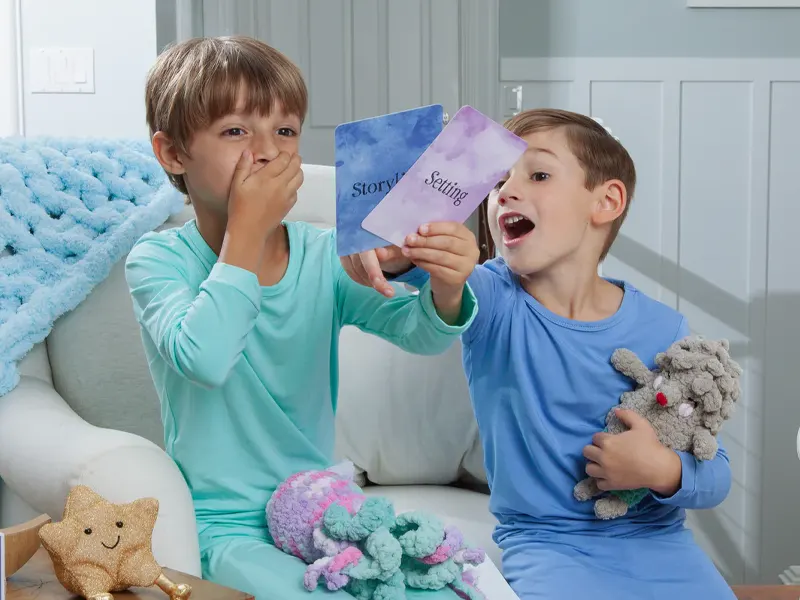
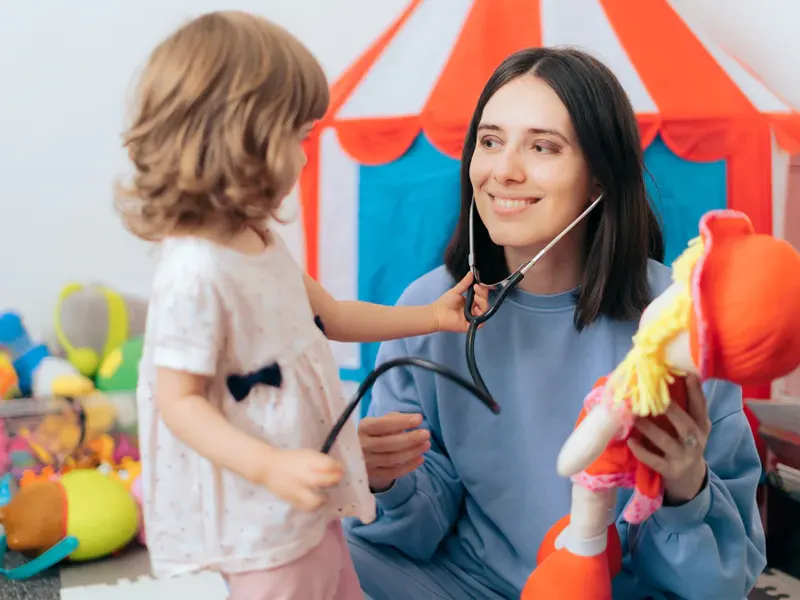
Role Play and Pretend Play: Role-playing activities, such as pretending to be animals, characters from stories, or even family members, help develop both language skills. When children act out scenarios, they practice expressing themselves clearly while also learning to interpret social situations and understand the roles of others.
Charades: This fun game allows children to practice both receptive and expressive language. One person acts out a word or phrase while the others guess it. This encourages expressive language by having children communicate non-verbally, and receptive language by interpreting the actions and guessing the correct word or phrase.
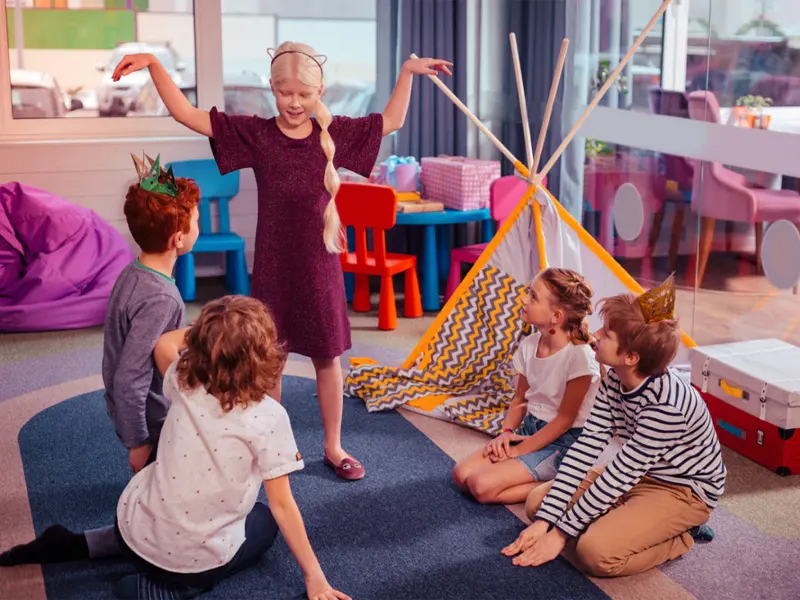
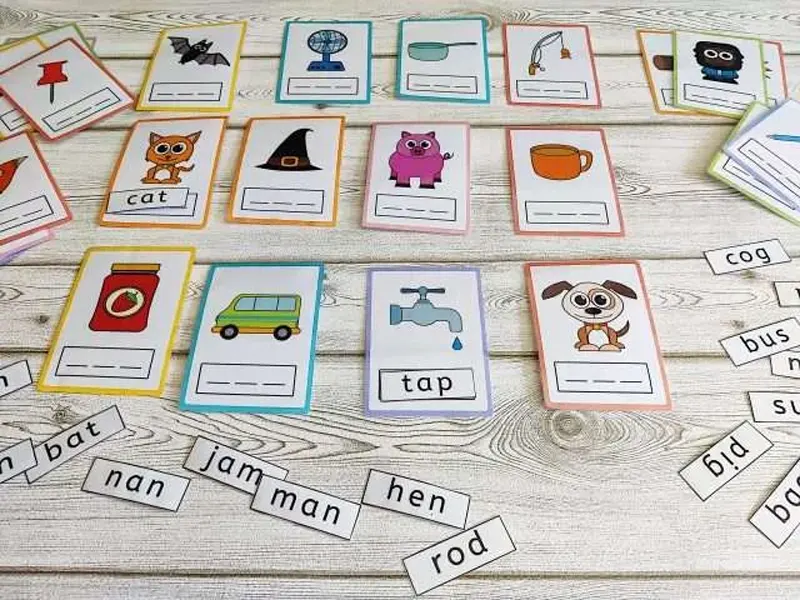
Matching Games: Create or purchase a matching game with pictures of objects, animals, or people. Ask your child to match the picture with the word or description you say. This activity strengthens receptive language by helping children associate words with their meanings and images, and it supports memory and vocabulary development.
Sing Songs with Actions: Songs with accompanying actions or movements are great for both receptive and expressive language development. Songs like “If You’re Happy and You Know It” or “The Wheels on the Bus” encourage children to understand and follow directions (receptive language) while also expressing themselves through gestures and singing (expressive language).

Practice Active Listening
Active listening is a key strategy for developing receptive language. When adults listen attentively to children, they show the importance of understanding and responding appropriately. This practice helps children learn how to process spoken language and improve their receptive language. Additionally, responding to children’s words with follow-up questions or comments encourages them to expand their responses, which enhances their expressive language.
Encourage Storytelling and Retelling
Encouraging children to tell stories or recount events is an excellent way to nurture both receptive and expressive language. When children listen to stories, they improve their receptive language by understanding narrative structures and vocabulary. Retelling stories allows them to organize their thoughts and practice expressing themselves, reinforcing their expressive language skills.
Use Songs and Rhymes
Songs and rhymes are enjoyable tools for promoting both receptive and expressive language development. The repetition of phrases and rhythms helps children develop listening and comprehension skills, improving their receptive language. Singing along with familiar songs or completing rhyming patterns allows children to practice expressive language, boosting their confidence in speaking and pronunciation.
Create a Language-Rich Environment
A language-rich ambiente di classe is essential for supporting both receptive and expressive language. By surrounding children with books, labels, posters, and interactive dialogue, you encourage constant exposure to new vocabulary and sentence structures. This environment facilitates the growth of receptive language through reading and listening, while also providing opportunities for children to express themselves in various contexts.
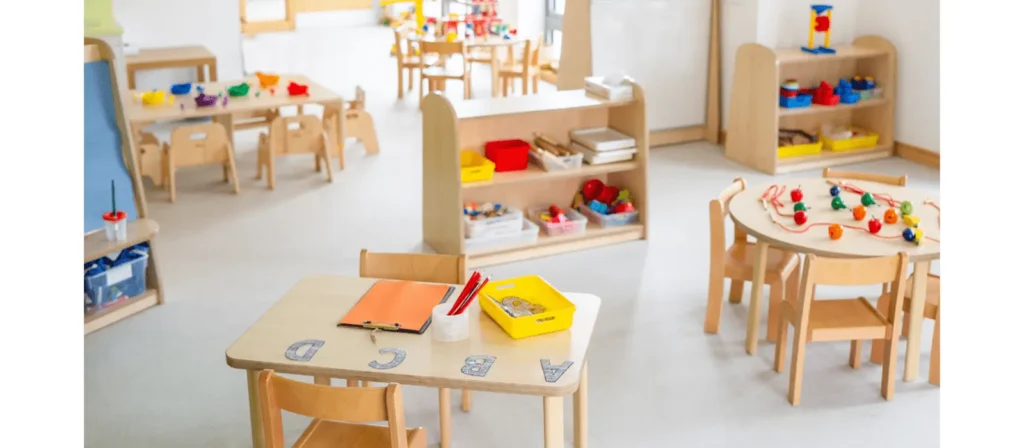
Provide Opportunities for Group Interaction
Group interactions are an excellent way for children to practice both receptive and expressive language. Listening to peers and participating in group discussions help children strengthen their receptive language skills. Engaging in these group activities also provides opportunities for children to express themselves, further developing their expressive language as they share ideas, negotiate, and cooperate with others.
Non limitarti a sognarlo, progettalo! Parleremo delle tue esigenze di arredamento personalizzato!
Understanding Mixed Receptive-Expressive Language Disorder
Mixed receptive-expressive language disorder (MRELD) is a communication condition in which a child experiences difficulties in both understanding language (receptive skills) and expressing themselves through language (expressive skills). Unlike children who have isolated delays in either comprehension or speaking, those with MRELD face challenges in both areas simultaneously, which can significantly affect their ability to communicate, learn, and engage socially.
What Is Mixed Receptive-Expressive Language Disorder?
MRELD is classified as a developmental language disorder, meaning it is present from early childhood and not due to hearing loss, intellectual disability, or emotional disorders. Children with this condition struggle to understand spoken language and also find it difficult to produce coherent, age-appropriate speech or written expression. These difficulties often appear early in life and become more evident as communication demands increase in preschool and school settings.
Common Signs and Symptoms
Children with MRELD may display a combination of receptive and expressive language delays, including:
- Difficulty understanding spoken instructions or following directions
- Trouble grasping the meaning of words, questions, or simple conversations
- Limited vocabulary and difficulty learning new words
- Frequent word-finding problems or sentence construction errors
- Vague or incomplete storytelling
- Repetitive speech or echolalia (repeating others’ words)
- Avoidance of speaking, especially in groups or unfamiliar settings
- Frustration during communication or frequent communication breakdowns
Because symptoms can vary widely in severity and presentation, some children may appear shy, inattentive, or even oppositional when, in fact, they are simply struggling to understand and express language.
Diagnosis and Assessment
A formal diagnosis of mixed receptive-expressive language disorder is made by a certified speech-language pathologist (SLP). The assessment typically includes standardized language tests, observational analysis, and input from caregivers and educators. It’s essential to rule out other conditions, such as autism spectrum disorder, hearing impairments, or general developmental delays, before confirming MRELD.
Early identification is critical, as children with this disorder often need targeted support to make progress in both comprehension and communication.
Treatment and Support Strategies
The most effective treatment for MRELD is early, individualized speech-language therapy. Therapists work on both receptive and expressive goals using a range of techniques such as:
- Visual aids and real-life objects to support comprehension
- Modeling and expanding language during play
- Repetition and reinforcement of new vocabulary
- Use of social stories and role-playing to build conversational skills
- Parent coaching to continue language-building strategies at home

FAQs About Receptive and Expressive Language Skills
- How can parents support receptive and expressive language development at home?
Engage in regular conversations, read aloud daily, play interactive games, ask open-ended questions, and model rich vocabulary in everyday situations. - Are receptive and expressive language skills linked to academic performance?
Absolutely. Strong language skills are foundational for reading comprehension, writing, classroom participation, and learning across all subjects. - What therapies are available for receptive and expressive language delays?
Speech-language therapy is the most common intervention, using targeted activities to improve both understanding and expression in a structured, supportive setting. - Can bilingualism affect receptive or expressive language development?
Bilingual children might temporarily appear delayed, but in most cases, they develop language skills in both languages over time with sufficient exposure. - What is the difference between receptive and expressive language skills?
Receptive language is the ability to understand information, such as listening to instructions or reading a sentence. Expressive language is the ability to convey thoughts, needs, or ideas through speech, writing, or gestures. In short, receptive is about understanding, and expressive is about communicating. - Why are receptive and expressive language skills important in early childhood?
These skills are the foundation of all communication. Strong receptive language helps children understand directions and engage in learning, while strong expressive language enables them to ask questions, share experiences, and interact socially.
Conclusione
Receptive and expressive language are fundamental to a child’s ability to communicate, learn, and engage with the world around them. While receptive language focuses on understanding spoken or written language, expressive language allows individuals to share their thoughts, ideas, and emotions. These two areas of language development are deeply interconnected and work together to form a complete communication system.
As a leading supplier of mobili per la scuola materna and educational toys, Xiair World World World offers a range of high-quality products designed to inspire learning, creativity and interaction, providing the perfect tools to support children’s cognitive and language development. By incorporating educational toys and well-designed furniture into children’s environments, parents and educators can simultaneously develop children’s receptive and expressive language skills, helping children communicate confidently and succeed in all aspects of life.



